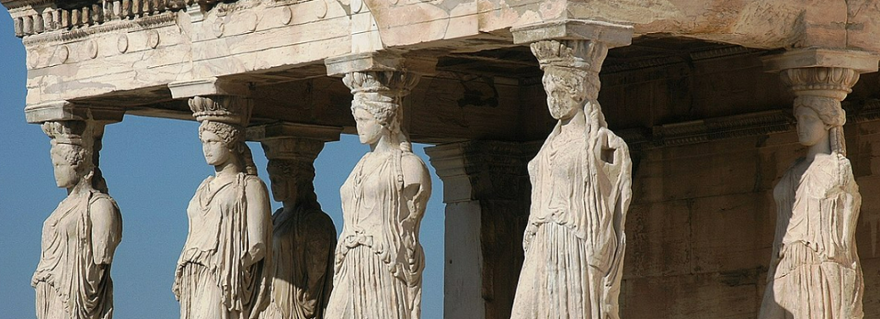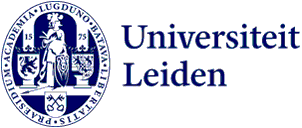
International Women's Day: the visibility of women in archaeology
On 8 March, International Women’s Day, equal opportunities for women worldwide, empowerment, and gender equality take centre stage. For years, the role of women in the past has been nearly invisible. Four archaeologists reflect on this inequality of focus, from hunter-gatherers in the palaeolithic to the narratives we tell ourselves about the past, and what this may cost us as a society.
Hunters vs. gatherers
When thinking of life in the palaeolithic , there is a tendency to focus on the consumption of meat, and the role of men as hunters. Dr Amanda Henry investigates the real paleo diet, and notes that it contained more plant-based foods than is often assumed. ‘Hunting leaves behind very visible signatures, like fossilised bones and stone tools related to hunting.’ Ethnographic studies further entrenched this focus, as male scholars focused on the role of men in traditional communities. ‘This was then applied to our understanding of the past.’
An increase of female scholars has led to a more diverse image. ‘Hunting is risky. It is not unusual that men come back empty handed. In these traditional communities most of the time they eat tubers or other starchy plants as the main part of the meal.’ The role of plant foods in the diet can show us more about the roles of subcommunities within a larger group. ‘We still try to overcome the vision of man as a hunter, with phenomena like the “Paleo diet” and carnivore diet based on this traditional view. Yet it is not real.’

As complex and weird as us
There seems to be a large gap between the current academic understanding of the distant past, and the general public's image. ‘We should be focusing on sharing these narratives. We tend to paint the past with broad strokes, but this gives us a very sketchy picture, rather than a nuanced understanding that is a better representation of reality. This makes it easier to see our distant ancestors as ‘other’, while they were as complex and weird as we are.’
Challenging traditional narratives
One of the more concrete sources of knowledge of our ancestors is our skeleton, the study of osteology. Osteoarchaeologist and PhD candidate Maia Casna has seen the traditional narratives upended by evidence from human bones. ‘In the historic documents in the Netherlands, women were only mentioned in a very one-dimensional way: they would look after the kids and tend to the house,’ she notes. ‘Osteoarchaeology can distinguish between the skeletal remains of males and females. The results from this challenge the traditional narrative.’
An example of a changing narrative is tobacco use in the early modern Netherlands. ‘In the historical documents it is implied that it was mostly men who smoked tobacco. All studies on the use of tobacco focused on the men. Osteoarchaeology, however, has pointed out that women almost smoked as much as men. We would have missed that part of history if we hadn't investigated this.’

Respiratory diseases
Casna still sees many narratives that have no basis in the osteoarchaeological evidence. ‘There is this preconception that women exclusively tended to the house in the past. You would think that this results in a difference between respiratory diseases between men and women. We have found very little evidence for this. There is a prevailing narrative that women have always had certain roles in the past, and that they have only come to the workplace in the past 100 years.’ Based on the skeletal remains our ancestors have left behind, this was not the case.
Assumptions
Another time in which women have long been invisible in archaeology is the Iron Age. Dr Richard Jansen recently worked on an exhibition on chieftain graves in Museum Jan Cunen, Oss. ‘For a long time the remains of people buried in these elite graves were interpreted as males, whether there was evidence or not.’ In many cases the cremated remains were lost. ‘It is a dangerous assumption to automatically conclude that these graves were constructed for males, also when these graves contained weaponry.’ Jansen harkens back to the largest chieftain grave ever found in Europe, located near Vix in Burgundy, France. ‘An extraordinary grave, with among others several items of (gold) jewelry, a cart and a large bronze crater. ‘Based on the analysis of the human remains inside the grave, archaeologists are sure the grave was made for a female.’

Full story
Modern archaeologists are for the most part aware of the danger of making assumptions on sex. ‘And the technological developments are going fast. In ten years, it will be easier to use DNA analysis on cremated remains. It is important to tell the full story.’ Jansen notes that arguments built on an incomplete or wrong image of the past can be used to push an agenda. ‘Based on the outdated image you could state ‘it is normal that males are dominant, for in the past it was the same’. In this way the past is misused to justify how people act now.’
Based on inequality
In his research Dr Aris Politopoulos focuses on storytelling and narratives of the past. ‘A lot of these narratives about the past say more about who we are now, than about the people before us,’ he points out. ‘We should not forget where we came from ourselves: a post-industrial capitalist society that in its core is based on exploitation and inequalities.’ The past can be used to justify and reproduce contemporary inequalities. ‘This is very important to keep in mind when we are talking about the past, as well as when we hear others talk about the past.’

Crossroads
Politopoulos believes that we are at a crossroads in our understanding of the past. ‘Thanks to social changes the scientific approach also changes. Nowadays we have a wider understanding of the diversity of human experience. However, the biggest challenge is how to communicate this in relation to the past. We can talk about it all we want in the academic ivory tower, but people still believe in the myth of “man the hunter”. If we aspire to a more equal future, we need break such myths.’
A happy mess
One thing that becomes clear when talking to archaeologists is that the past is not black-and-white. ‘We need to let go of the idea that the past is structured in clear-cut boxes and roles. It is much more colorful. I would even go as far as to say that the past is a mess! A happy mess.’ He grins. ‘It is, for example, a joyous mess of gender expressions, experiences, and overlapping narratives. The past gives us the tools to talk about this diversity of human experience. That is where the storytelling aspect of archaeology should come forward. We as archaeologists have the responsibility to communicate new knowledge about the past, talk to people, talk to journalists, talk with developers of media. We often get stuck in the idea that science stands objectively above and away from society. Yet, to change the future we need to be embedded in society.’
